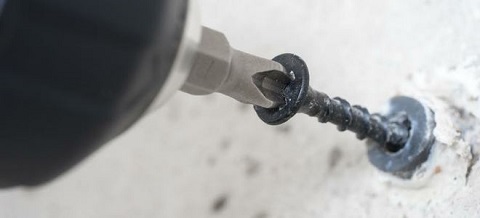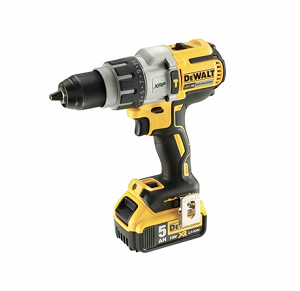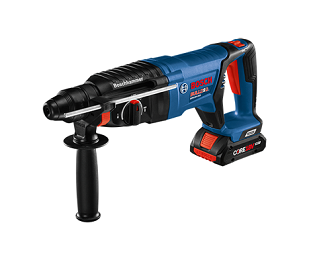The Difference Between Hammer Drills And Rotary Hammers
by Black Ink Team
Making a hole in concrete is a lot different than making a hole in wood. Whereas wood is soft enough so that a drill bit rotating fast enough can spiral itself through it, concrete offers a lot more resistance; therefore percussive force is required. In ancient China, an irrigation technique called ‘percussive drilling’ was invented whereby several men jumping up and down on a platform connected to a bamboo drill bit could drill holes up to 3,000 ft. deep. Today, that idea has been miniaturized and re-manifested in the form of hammer drills and rotary hammers.

At first glance, the two tools are exactly alike. That is to say they accomplish the same thing: they both rotate a drill bit while moving it back and forth in a hammering motion. You can use either a hammer drill or a rotary hammer to drill holes in concrete – however, the underlying design principles for them are completely different, and there are use cases where you would want to use one over the other.

DeWalt’s DCD996P2 Hammer Drill
Hammer drills generally generate a smaller amount of hammering force and therefore drill through concrete less quickly. But, they are smaller, easier to handle, and more power efficient. They operate using a cam shaft – a special clutch system that enables them to rotate and move the drill bit back-and-forth simultaneously. The motor is responsible accomplishing both tasks. Most hammer drills have a switch that let you disable the hammering motion, so you can use them as ordinary drills. They make up for their small hammering force by delivering high amounts of impacts per minute.

Bosch's Bulldog Rotary Hammer
Rotary drills, on the other hand, pack quite a punch. They operate using the same technology as jackhammers do: electro-pneumatic systems. A set of pistons connected to the drive shaft are activated in conjunction with the motor and accelerate the chuck and drill bit forward and backward. The pistons are separated inside a cylinder by a cushion of compressed air which lends them increased power. As rotary drills are more powerful, they mostly aren’t cordless and are equipped with additional safety devices. A common safety device is a slip-clutch, which will shut down the device if the drill bit becomes stuck. This stops the tool from leaping out of the worker’s hands and causing an injury.
